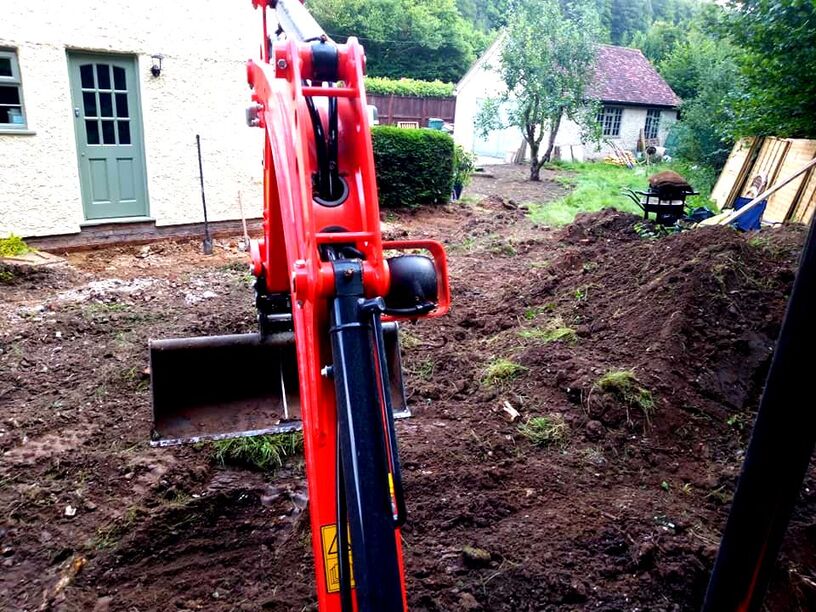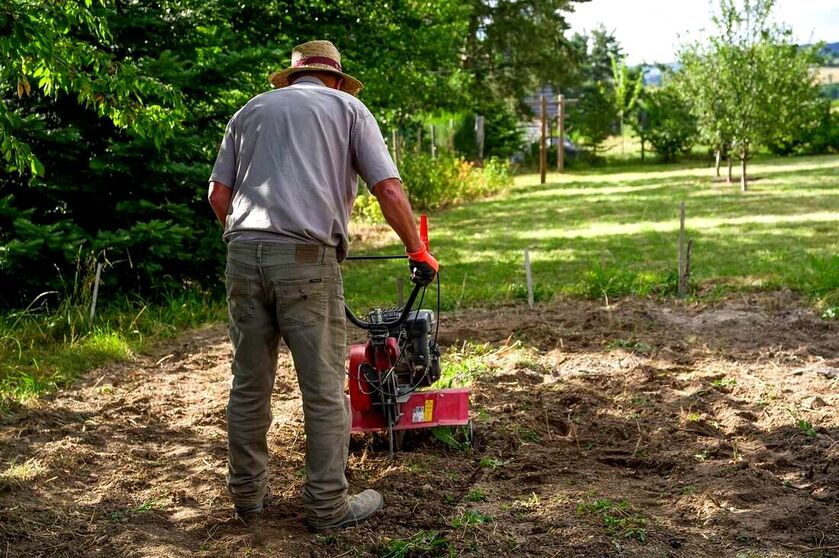|
This article contains affiliate links
Those who have encountered garden drainage problems know just how frustrating they can be. Not only can poor drainage kill plants it can render a large part of your property completely unusable. One of the worst parts about poor garden drainage is it is not always easy to diagnose. Very often poor drainage can be a combination of contributing factors which may not be obvious. Even very simple changes within your local vicinity can result in new drainage problems where there were none previously. Consequently, in this article, I am going to list 10 common garden drainage problems and their solutions. 1. Boggy lawnsBoggy lawns are one of the most frustrating and common drainage problems for gardens. The issue can result in a muddy lawn and unusable surface for outdoor activities. Solution
A typical problem with lawns is over time they become compacted. This can make it difficult for water to percolate and drain away.
Most boggy lawns have low areas where water naturally flows too. This can lead to standing water and bogginess. The two most common solutions for boggy lawns are re-levelling and drainage channels. Drainage channels can be excavated into the lawn and perforated pipes installed. These channels can then be filled with free draining gravels. A new lawn should then be laid upon well ameliorated topsoil. This will be consolidated and levelled so there are no low spots that collect water. 2. Poor soil drainage
Poor soil drainage is an ever increasing problem particularly in sub-urban developments. This is due to an ever increasing amount of hard surfacing. Patios and driveways can lead to less soil abortion and saturated flower borders. This can lead to roots rotting and plants dying. Solution
Poor soil drainage is often a case of ground water having nowhere to go. This leads to saturated topsoil which is difficult to work and cultivate. The most common solution for this is installing a drainage feature. This typically involves installing a soak-away fed by free draining gravel channels from your planting beds. Why not visit our article on how to install soak-always and drainage channels here. 3. Standing water
There are a few reasons why you may have standing water in your garden. The most common are low spots and compaction. It could also be a broken underground drainage pipe although this is much less common. SolutionIf the standing water is only in one area excavate the ground carefully to discover any broken pipes. If all the moisture is near the surface it is probably not a pipe. If you do find a broken pipe it will need to be uncovered and repaired. Most of the time however standing water will be due to low spots. The best solution for this will be levelling the ground to a more consistent gradient. You may also want to consider slightly raising your gardens level. 4. Water sitting on patios
Water sitting on a patios surface has two possible causes, incorrect levels or a clogged up drainage system. Sitting water on a patio cannot just render the space unusable it can also encourage algae. This can lead to discolouration and hazardous slips. SolutionClear out any gutters or drainage channels and make sure they are not blocked. If your paving and garden are both flooding you have a greater garden drainage problem. This will need to be assessed by a garden drainage professional. Most of the time however standing water on patios is because the pavers have not been laid correctly. You may need to relay the paving so there are no low spots. 5. Garden offices
There has been an explosion in garden offices over the past few years. Although particularly advantageous over the pandemic most of these installations do not mitigate surface run-off. I have been called to dozens of gardens which have become flooded after garden office installation. Most of these installations have made no provision for excess surface run off whatsoever. The result is an accelerated level of surface run off and an increased chance of garden flooding. Solution
Installing a garden soak-away system plumbed into the roof gutters of the office. The minimum size should really be a cubic metre. For more information on garden drainage soak away installation visit my article here. 6. Neighbours landscaping
It is actually very common for a neighbours landscaping project to cause drainage issues for your garden. Most of the time, this is completely unintentional and not deliberate. Landscaping projects such as artificial turf, new patios, removing trees and re-levelling can all affect your gardens drainage. Solution
Very often such circumstances are a matter of finding somewhere for excess water to go. Typically the best option here is to install a soak away system so the water has somewhere to drain to. You may also find and levelling your garden at a slightly higher level may also help. 7. Slumping levelsOne of the commonest causes of garden drainage problems is low spots and slumping levels. Surface water naturally runs to the lowest point and collects in these low spots. In some cases the whole garden may sit within a natural low spot. Solution
Survey your gardens levels using a tight string line and a long spirit level. One of the best devices for this is a laser level and tripod. Try to work out where the low spots are so you can raise these to a more flush level. Work out if surrounding properties are naturally higher or lower than you. Ask yourself, before these homes where built where did surface water run to? You will then need to re-level your garden so there is no slumping or low spots. If all your neighbours are higher than you, you will also need to raise your gardens soil level. 8. Compaction
Over the years through general usage, ground within gardens slowly becomes ever more compacted. This is particularly the case with lawns and gardens with little planted vegetation. As the ground compacts water finds it difficult to percolate though the surface. Eventually the ground becomes so compacted rainwater simply pools upon the surface. Solution
The best way to relive ground compaction is by ripping. This involves ripping through the ground with a long hook like attachment. These attachments are traditionally fixed to excavator machines and tractors. However if you do not have access or the budget you can turn the soil by hand. You can then use a tiller machine to break up the soil clods. Excavating and installing free draining gravel channels can also help water to drain easily. 9. Blocked drains and pipes
It is very common for existing landscape drainage systems to become silted and blocked over time. This can be due to leaf fall, accumulative silting and tree roots. Solution
Clear out any moss, leaves and debris from any channel drains or drainage pipes. Flush all drainage systems with hot water to make sure they are clear.
10. Tree roots
It is sometimes the case that large tree roots establish around hidden land drains. This can lead to the pipes becoming broken and silted especially when made of clay. If you suspect a failed land drain you may require a drainage survey to send a camera up the pipes. If you have located drainage pipes which don’t drain check their depth and direction. If they are shallow and run under large trees it is very likely they have collapsed. Newly establishing trees have also been observed damming water inside gardens. This happens when trees or large hedges are planted along a low lying boundary. As the roots establish they fill and compact the soil causing it to become raised. This acts as an impenetrable barrier to water where it used to percolate freely. The result is a damming effect where water becomes trapped inside the garden. Solution
If tree roots have damaged a drainage pipe it will have to be excavated and replaced. If roots are causing damming you may need to excavate a drainage channel through the root mass. Alternatively you can install a drainage soak-away to provide somewhere for trapped water to drain to. Another option is to excavate a seasonally flooding pond or bioswale to help absorb the water naturally.
Thank you for reading my article on 10 common garden drainage problems and their solutions.
If you are currently having garden drainage problems feel free to email me pictures and questions regarding your issue. I will do my best to give you as much free advice as I can! Below I will link to some of my other garden drainage articles you may find useful.
'As an Amazon associate I earn from qualifying purchases'
0 Comments
Leave a Reply. |
The Author
|
Landscaping services across Buckinghamshire, Amersham, Aylesbury & High Wycombe
Hyde Heath, Amersham, Buckinghamshire |
|

















